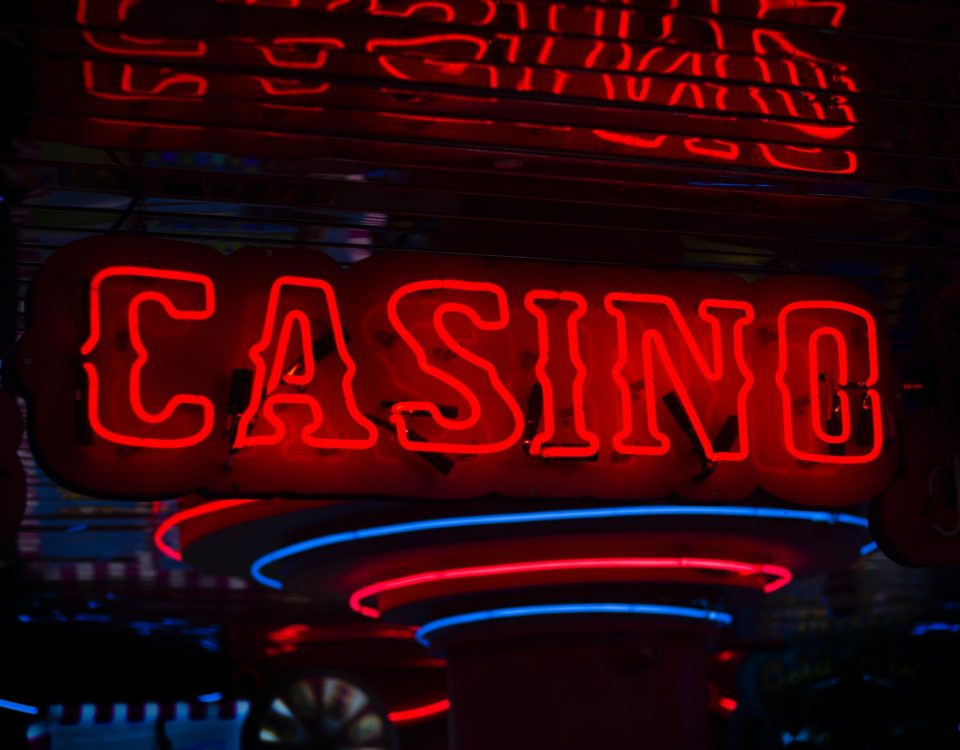- Klantenservice
- shelley duvall children

Een online casino kiezen
28 december 2022Francesco took two sets of four jars. These cookies help provide information on metrics the number of visitors, bounce rate, traffic source, etc. He made drawings of a large number of parasites, recording the places they had been found. Contribution of the Following Scientists in the Field of Microbiology. General Microbiology, History : Francesco Redi (1626-1697 There he served at the Medici Court as both the head physician and superintendent of the ducal . Francesco Redi, an Italian scientist was the first scientist to challenge the theory of spontaneous generation by demonstrating that living organisms did not actually originate from non-living things. The Theory of Biogenesis | Spallanzani's and Pasteur's Experiment His observations backed up his conviction that parasites laid eggs from which offspring developed and did not grow spontaneously. It is considered among the best literary works of the 17th century. This cookie is set by GDPR Cookie Consent plugin. Dr. Helmenstine holds a Ph.D. in biomedical sciences and is a science writer, educator, and consultant. Redi performed series of experiments in the early 1670s in which he covered jars of meat with fine lace that prevented the entry of flies into the jars. Out of these, the cookies that are categorized as necessary are stored on your browser as they are essential for the working of basic functionalities of the website. Veterinary Parasitology Vol. Within a century of its invention in 1595, . Francesco Redi was born on February 18, 1626 in the city of Arezzo in Tuscany, Italy. Aristotle had also promoted the idea that life is generated spontaneously: he said simpler lifeforms such as worms and maggots need no parents they emerge alive from the earth and from rotting organic matter. He proposed a toxin-antitoxin interaction called an Ehrlich phenomenon and also introduced methods of standardizing toxin and antitoxin. USA. Fracastorius of Verona (1546) proposed a Contagium vivum as a possible cause of infections disease and Von Plenciz (1762) suggested that each disease was caused by a separate agent. His most famous contribution to science was the "meat in a jar" experiment which disproved "spontaneous generation". Fracastoro's Theory on Transmission of Syphilis. He has many contributions to microbiology: Principles of fermentation Pasteurization of milk Sterilization techniques The germ theory of disease. Tags: Question 12 . Pasteur, thus in 1858 finally resolved the controversy of spontaneous generation versus biogenesis and proved that microorganisms are not spontaneously generated from inanimate matter but arise from other microorganisms. Louis Pasteur is known as the Father of Modern Microbiology / Father of Bacteriology. What is a controlled Experiment? His detailed and thoughtful observations illuminated a broad spectrum of problems ranging from regeneration to the genesis of thunderclouds. These cookies track visitors across websites and collect information to provide customized ads. Francesco Redi, (born Feb. 18, 1626, Arezzo, Italydied March 1, 1697, Pisa), Italian physician and poet who demonstrated that the presence of maggots in putrefying meat does not result from spontaneous generation but from eggs laid on the meat by flies. Redi documented over 100 parasite species, observing once again that creatures popularly believed to generate spontaneously actually hatched from eggs. Francesco Redi Subscribe for new blog posts, notes & news in microbiology. Redi therefore proved that decaying meat did not produce maggots. Just a few miles from Francescos school, Galileo was nearing the end of a remarkable life. Q. Ch. 3 Multiple Choice - Microbiology | OpenStax Analytical cookies are used to understand how visitors interact with the website. As with Jenners vaccination for small pox, principle of the preventive treatment of rabies also worked fully which laid the foundation of modern immunization programme against many dreaded diseases like diphtheria, tetanus, pertussis, polio and measles etc. 6th Edition. He was the founder of the Pasteur Institute, Paris. //What Did Zacharias Janssen Contribute to Microbiology? Scholarships / Opportunities in Microbiology (MSc, PhD, Postdoc etc). Experiments on the Generation of Insects A little over a decade later, Antonie van Leeuwenhoek confirmed Redis maggot and fly work, observing the entire lifecycle. Francesco took two sets of four jars. Advertisement cookies are used to provide visitors with relevant ads and marketing campaigns. Rudolph Virchow (1821-1902) was a German physician, anthropologist, politician and social reformer, but he is best known as the founder of the field of cellular pathology. Analytical cookies are used to understand how visitors interact with the website. After studying literature at school, Redi remained a lifelong enthusiast, building a collection of many old manuscripts. (2013)Microbiologyfundamentals :a clinical approach New York, NY : McGraw-Hill, Trivedi P.C., Pandey S, and Bhadauria S. (2010). Microbiology is said to have its roots in the great expansion and development of the biological sciences that took place after 1850. Redi studiedvenomous snakes to dispel popular myths about them. ThoughtCo. What did Francesco Redi contribute to the cell theory? Stimulated by his readings of 'animacules', the term for microbes at that time, he studied in London and Paris from 1746 to 1749. A Study of the Life and Accomplishments of Francesco Redi Francesco Redi was born on February 19, 1626 in Arezzo, Italy. 2. He was the first person to challenge the theory of spontaneous generation by demonstrating that maggots come from eggs of flies.. Having a doctoral degree in both medicine and . Stay updated! He studied and described more than a . If the meat was protected from flies, no eggs were laid and no maggots appeared. He was born on October 24th 1632 in Delft, Holland, and had an adequate, although by . These cookies track visitors across websites and collect information to provide customized ads. His scientific work resulted in a number of significant milestones: he showed that flies breed and lay eggs and do not, as was popularly believed, spontaneously generate; his microscopic examination of parasites marked the founding of modern parasitology; and in studying chemical treatments to kill parasites, he devised and performed the first controlled experiments in scientific history. Aristotle proposed that life arose from nonliving material if the material contained pneuma ("vital heat"). It was the German bacteriologist who discovered the bacteria that causes anthrax, septicaemia . New York: McGraw-Hill. Robert Koch. The ideas of all three scientists Schwann, Schleiden, and Virchow led to cell theory, which is one of the fundamental theories unifying all of biology. Having observed the development of maggots and flies on decaying meat, Redi in 1668 devised a number of experiments, all pointing to the same conclusion: if flies are excluded from rotten meat, maggots do not develop. Redis drawing of a donkey louse under the microscope, Redis drawing of an ant under the microscope. He constructed over 250 small powerful microscopes that could magnify around 50-300 times. What did Redi discover about spontaneous generation? One set of experiments refuted the popular notion of spontaneous generationa belief that living organisms could arise from nonliving matter. The Tuscan Redi (18 February 1626 - 1 March 1697), chief physician at the court of the Medici, had no lack of academic paternities: in various reference sources he is designated as the father of experimental biology, parasitology, experimental toxicology and helminthology (the study of helminth worms). 1. Francesco Redi and Controlled Experiments - scientus.org Girolamo Fracastoro's Proposal of a Scientific Germ Theory He demonstrated that it is not true that vipers drink wine, that swallowing snake venom is toxic, or that venom is made in a snake's gallbladder. Scientific Fields - The Knowledge Library Amazing 27 Things Under The Microscope With Diagrams, COVID-19 related free online courses with certificate, Microbiology of Extreme Environments (Types and Examples), Plant Cell- Definition, Structure, Parts, Functions, Labeled Diagram. Please refer to the appropriate style manual or other sources if you have any questions. Performance cookies are used to understand and analyze the key performance indexes of the website which helps in delivering a better user experience for the visitors. By the end of 1900, science of microbiology grew up to the adolescence stage and had come to its own as a branch of the more inclusive field of biology. Robert Koch provided remarkable contributions to the field of microbiology: According to Kochs postulates, a microorganism can be accepted as the causative agent of an infectious disease only if the following conditions are fulfilled:i. He showed the source of snake venom is two small bladders covering their fangs, which are compressed when the snake bites, squeezing out the venom. Bacchus in Tuscany Francesco Redi did an experiment with meat and maggots and concluded that maggots do . Who is Francesco Redi What is his contribution in studying the origin The organism can be isolated and grown in pure culture. Actually he was a Dutch linen merchant but spent much of his spare time constructing simple microscopes composed of double convex lenses held between two silver plates. Spontaneous generation, a theory that maggots, fleas, worms and other living organisms developed from inorganic or dead organic matter, was the prevalent viewpoint of scientists for around 2,000 years, since Aristotle first posited a description of the phenomenon. Spontaneous Generation PPT - Final | PDF | Science | Nature Second edition. Around the same time that Pasteur was doing his experiments, a doctor named. He proposed the side-chain theory for antibody production. Robert Hooke. It survives in 10-65C and in anaerobic conditions. Maggots appeared on the meat in the open jar and on the gauze but not in the closed jar. Open Button. Francesco Redi, as far back as 1668, had set out to refute the idea of macroscopic spontaneous generation, by publishing the results of his experimentation on the matter. Is Spontaneous Generation Real? - ThoughtCo @2023 - All Right Reserved. Experiments in support and against Spontaneous Generation - Microbe Notes In addition to his contributions to microbiology, Hooke made contributions to physics (Hooke's Law of Elasticity), astronomy, philosophy, and even architecture. The combined efforts of many scientists and most importantly Louis Pasteur and Robert Koch established the, Once scientists knew that microbes caused disease, it was only a matter of time before medical practices improved dramatically. francesco redi (1626-1697) by DrChika December 25, 2022 written by DrChika December 25, 2022 This experiment disproved the Spontaneous Generation and paved the way for Pasteur's research. Because of this extraordinary contribution to microbiology. Charles Chamberland (March 12, 1851 March 2, 1908), France What rights did the middle colonies have? He then repeated the experiment but, instead of sealing the flasks, covered half of them with gauze so that air could enter. John Needham - Biography, Facts and Pictures - Famous Scientists Experimental science was in its infancy, and Redi came up with a brilliant new idea: the controlled experiment. francesco redi contribution to microbiology Although Redi's experiments ran contrary to the beliefs of the time, he did not have the same sort of problems. Anton Van Leeuwenhoek. His father died when John was a child and young John became a Franciscan. Lazzaro Spallanzani - MICROBIOLOGY This cookie is set by GDPR Cookie Consent plugin. It is a saccharolytic bacteria that degrade sugar into alcohol. biology, microscopy. Redi filled two jars with decaying meat. Elie Metchnikoff: He described phagocytosis and termed phagocytes.8. Who is Francesco Redi What is his contribution in studying the origin of life? Birth: February 18, 1626, in Arezzo, Italy, Death: March 1, 1697, in Pisa Italy, buried in Arezzo, Published Works: Francesco Redi on Vipers (Osservazioni intorno alle vipere), Experiments on the Generation of Insects (Esperienze Intorno alla Generazione degliInsetti), Bacchus in Tuscany (Bacco in Toscana). But opting out of some of these cookies may affect your browsing experience. In 1699 Francesco Redi boiled broth and sealed it; no growth occurred, suggesting that Fracastoro was correct. This article was most recently revised and updated by, https://www.britannica.com/biography/Francesco-Redi, The Galileo Project - Biography of Francesco Redi, Institute and Museum of the History of Sciences - Biography of Francesco Redi, Court Scientists - Biography of Francesco Redi, Francesco Redi - Student Encyclopedia (Ages 11 and up). It would also be unfair to remember him for that and that alone, because his contributions to microbiology were far more extensive and important. Francesco Redi16261697 [ ] Ideas About Health - Boston University Archaea (cell walls, if present, lack peptidoglycan) 3. This is called abiogenesis. Until about the 1880s, people still believed that life could form out of thin air and that sickness was caused by sins or bad odors. He was . Needham, John Turberville | Encyclopedia.com 1.1B: History of Microbiology - Hooke, van Leeuwenhoek, and Cohn Spallanzani had many findings against epigenesist and the role of sperm which he identified as "animalcules" in generation (1). Tags: Question 13 . This reaction is called Kochs phenomenon. Encyclopaedia Britannica's editors oversee subject areas in which they have extensive knowledge, whether from years of experience gained by working on that content or via study for an advanced degree. (adsbygoogle = window.adsbygoogle || []).push({}); Louis Agassiz | Maria Gaetana Agnesi | Al-BattaniAbu Nasr Al-Farabi | Alhazen | Jim Al-Khalili | Muhammad ibn Musa al-Khwarizmi | Mihailo Petrovic Alas | Angel Alcala | Salim Ali | Luis Alvarez | Andre Marie Ampre | Anaximander | Carl Anderson | Mary Anning | Virginia Apgar | Archimedes | Agnes Arber | Aristarchus | Aristotle | Svante Arrhenius | Oswald Avery | Amedeo Avogadro | Avicenna, Charles Babbage | Francis Bacon | Alexander Bain | John Logie Baird | Joseph Banks | Ramon Barba | John Bardeen | Charles Barkla | Ibn Battuta | William Bayliss | George Beadle | Arnold Orville Beckman | Henri Becquerel | Emil Adolf Behring | Alexander Graham Bell | Emile Berliner | Claude Bernard | Timothy John Berners-Lee | Daniel Bernoulli | Jacob Berzelius | Henry Bessemer | Hans Bethe | Homi Jehangir Bhabha | Alfred Binet | Clarence Birdseye | Kristian Birkeland | James Black | Elizabeth Blackwell | Alfred Blalock | Katharine Burr Blodgett | Franz Boas | David Bohm | Aage Bohr | Niels Bohr | Ludwig Boltzmann | Max Born | Carl Bosch | Robert Bosch | Jagadish Chandra Bose | Satyendra Nath Bose | Walther Wilhelm Georg Bothe | Robert Boyle | Lawrence Bragg | Tycho Brahe | Brahmagupta | Hennig Brand | Georg Brandt | Wernher Von Braun | J Harlen Bretz | Louis de Broglie | Alexander Brongniart | Robert Brown | Michael E. Brown | Lester R. Brown | Eduard Buchner | Linda Buck | William Buckland | Georges-Louis Leclerc, Comte de Buffon | Robert Bunsen | Luther Burbank | Jocelyn Bell Burnell | Macfarlane Burnet | Thomas Burnet, Benjamin Cabrera | Santiago Ramon y Cajal | Rachel Carson | George Washington Carver | Henry Cavendish | Anders Celsius | James Chadwick | Subrahmanyan Chandrasekhar | Erwin Chargaff | Noam Chomsky | Steven Chu | Leland Clark | John Cockcroft | Arthur Compton | Nicolaus Copernicus | Gerty Theresa Cori | Charles-Augustin de Coulomb | Jacques Cousteau | Brian Cox | Francis Crick | James Croll | Nicholas Culpeper | Marie Curie | Pierre Curie | Georges Cuvier | Adalbert Czerny, Gottlieb Daimler | John Dalton | James Dwight Dana | Charles Darwin | Humphry Davy | Peter Debye | Max Delbruck | Jean Andre Deluc | Democritus | Ren Descartes | Rudolf Christian Karl Diesel | Diophantus | Paul Dirac | Prokop Divis | Theodosius Dobzhansky | Frank Drake | K. Eric Drexler, John Eccles | Arthur Eddington | Thomas Edison | Paul Ehrlich | Albert Einstein | Gertrude Elion | Empedocles | Eratosthenes | Euclid | Eudoxus | Leonhard Euler, Michael Faraday | Pierre de Fermat | Enrico Fermi | Richard Feynman | Fibonacci Leonardo of Pisa | Emil Fischer | Ronald Fisher | Alexander Fleming | John Ambrose Fleming | Howard Florey | Henry Ford | Lee De Forest | Dian Fossey | Leon Foucault | Benjamin Franklin | Rosalind Franklin | Sigmund Freud | Elizebeth Smith Friedman, Galen | Galileo Galilei | Francis Galton | Luigi Galvani | George Gamow | Martin Gardner | Carl Friedrich Gauss | Murray Gell-Mann | Sophie Germain | Willard Gibbs | William Gilbert | Sheldon Lee Glashow | Robert Goddard | Maria Goeppert-Mayer | Thomas Gold | Jane Goodall | Stephen Jay Gould | Otto von Guericke, Fritz Haber | Ernst Haeckel | Otto Hahn | Albrecht von Haller | Edmund Halley | Alister Hardy | Thomas Harriot | William Harvey | Stephen Hawking | Otto Haxel | Werner Heisenberg | Hermann von Helmholtz | Jan Baptist von Helmont | Joseph Henry | Caroline Herschel | John Herschel | William Herschel | Gustav Ludwig Hertz | Heinrich Hertz | Karl F. Herzfeld | George de Hevesy | Antony Hewish | David Hilbert | Maurice Hilleman | Hipparchus | Hippocrates | Shintaro Hirase | Dorothy Hodgkin | Robert Hooke | Frederick Gowland Hopkins | William Hopkins | Grace Murray Hopper | Frank Hornby | Jack Horner | Bernardo Houssay | Fred Hoyle | Edwin Hubble | Alexander von Humboldt | Zora Neale Hurston | James Hutton | Christiaan Huygens | Hypatia, Ernesto Illy | Jan Ingenhousz | Ernst Ising | Keisuke Ito, Mae Carol Jemison | Edward Jenner | J. Hans D. Jensen | Irene Joliot-Curie | James Prescott Joule | Percy Lavon Julian, Michio Kaku | Heike Kamerlingh Onnes | Pyotr Kapitsa | Friedrich August Kekul | Frances Kelsey | Pearl Kendrick | Johannes Kepler | Abdul Qadeer Khan | Omar Khayyam | Alfred Kinsey | Gustav Kirchoff | Martin Klaproth | Robert Koch | Emil Kraepelin | Thomas Kuhn | Stephanie Kwolek, Joseph-Louis Lagrange | Jean-Baptiste Lamarck | Hedy Lamarr | Edwin Herbert Land | Karl Landsteiner | Pierre-Simon Laplace | Max von Laue | Antoine Lavoisier | Ernest Lawrence | Henrietta Leavitt | Antonie van Leeuwenhoek | Inge Lehmann | Gottfried Leibniz | Georges Lematre | Leonardo da Vinci | Niccolo Leoniceno | Aldo Leopold | Rita Levi-Montalcini | Claude Levi-Strauss | Willard Frank Libby | Justus von Liebig | Carolus Linnaeus | Joseph Lister | John Locke | Hendrik Antoon Lorentz | Konrad Lorenz | Ada Lovelace | Percival Lowell | Lucretius | Charles Lyell | Trofim Lysenko, Ernst Mach | Marcello Malpighi | Jane Marcet | Guglielmo Marconi | Lynn Margulis | Barry Marshall | Polly Matzinger | Matthew Maury | James Clerk Maxwell | Ernst Mayr | Barbara McClintock | Lise Meitner | Gregor Mendel | Dmitri Mendeleev | Franz Mesmer | Antonio Meucci | John Michell | Albert Abraham Michelson | Thomas Midgeley Jr. | Milutin Milankovic | Maria Mitchell | Mario Molina | Thomas Hunt Morgan | Samuel Morse | Henry Moseley, Ukichiro Nakaya | John Napier | Giulio Natta | John Needham | John von Neumann | Thomas Newcomen | Isaac Newton | Charles Nicolle | Florence Nightingale | Tim Noakes | Alfred Nobel | Emmy Noether | Christiane Nusslein-Volhard | Bill Nye, Hans Christian Oersted | Georg Ohm | J. Robert Oppenheimer | Wilhelm Ostwald | William Oughtred, Blaise Pascal | Louis Pasteur | Wolfgang Ernst Pauli | Linus Pauling | Randy Pausch | Ivan Pavlov | Cecilia Payne-Gaposchkin | Wilder Penfield | Marguerite Perey | William Perkin | John Philoponus | Jean Piaget | Philippe Pinel | Max Planck | Pliny the Elder | Henri Poincar | Karl Popper | Beatrix Potter | Joseph Priestley | Proclus | Claudius Ptolemy | Pythagoras, Adolphe Quetelet | Harriet Quimby | Thabit ibn Qurra, C. V. Raman | Srinivasa Ramanujan | William Ramsay | John Ray | Prafulla Chandra Ray | Francesco Redi | Sally Ride | Bernhard Riemann | Wilhelm Rntgen | Hermann Rorschach | Ronald Ross | Ibn Rushd | Ernest Rutherford, Carl Sagan | Abdus Salam | Jonas Salk | Frederick Sanger | Alberto Santos-Dumont | Walter Schottky | Erwin Schrdinger | Theodor Schwann | Glenn Seaborg | Hans Selye | Charles Sherrington | Gene Shoemaker | Ernst Werner von Siemens | George Gaylord Simpson | B. F. Skinner | William Smith | Frederick Soddy | Mary Somerville | Arnold Sommerfeld | Hermann Staudinger | Nicolas Steno | Nettie Stevens | William John Swainson | Leo Szilard, Niccolo Tartaglia | Edward Teller | Nikola Tesla | Thales of Miletus | Theon of Alexandria | Benjamin Thompson | J. J. Thomson | William Thomson | Henry David Thoreau | Kip S. Thorne | Clyde Tombaugh | Susumu Tonegawa | Evangelista Torricelli | Charles Townes | Youyou Tu | Alan Turing | Neil deGrasse Tyson, Craig Venter | Vladimir Vernadsky | Andreas Vesalius | Rudolf Virchow | Artturi Virtanen | Alessandro Volta, Selman Waksman | George Wald | Alfred Russel Wallace | John Wallis | Ernest Walton | James Watson | James Watt | Alfred Wegener | John Archibald Wheeler | Maurice Wilkins | Thomas Willis | E. O. Wilson | Sven Wingqvist | Sergei Winogradsky | Carl Woese | Friedrich Whler | Wilbur and Orville Wright | Wilhelm Wundt, Famous Scientists - Privacy - Contact - About - Content & Imagery 2023, Experiments on the Generation of Insects, 1668, : Color change allows harm-free health check of living cells, : Shunned after he discovered that continents move, : The dog whisperer who rewrote our immune systems rules, : In the 1600s found that space is a vacuum, : Aquatic ape theory: our species evolved in water, : Became the worlds most famous codebreaker, : We live at the bottom of a tremendously heavy sea of air, : The first mathematical model of the universe, : Revolutionized drug design with the Beta-blocker, : Discovered our planets solid inner core, : Shattered a fundamental belief of physicists, : Unveiled the spectacular microscopic world, : The cult of numbers and the need for proof, : Discovered 8 new chemical elements by thinking, : Record breaking inventor of over 40 vaccines, : Won uniquely both the chemistry & physics Nobel Prizes, : Founded the bizarre science of quantum mechanics, : Proved Earths climate is regulated by its orbit, : The giant of chemistry who was executed, : The greatest of female mathematicians, she unlocked a secret of the universe, : Pioneer of brain surgery; mapped the brains functions, : Major discoveries in chimpanzee behavior, : 6th century anticipation of Galileo and Newton, : Youthful curiosity brought the color purple to all, : Atomic theory BC and a universe of diverse inhabited worlds, : Discovered how our bodies make millions of different antibodies, : Discovered that stars are almost entirely hydrogen and helium.



